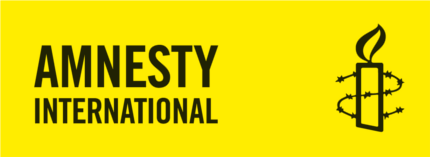Top newsWorld
 English language
English languageNSA
The New York Times reported that the NSA carries out an eavesdropping effort, dubbed Operation Dreadnought, against the Iranian leader Ayatollah Ali Khamenei. During his 2009 visit to Iranian Kurdistan, the agency collaborated with the GCHQ and the U.S.'s National Geospatial-Intelligence Agency, collecting radio transmissions between aircraft and airports, examining Khamenei's convoy with satellite imagery, and enumerating military radar stations. According to the story, an objective of the operation is "communications fingerprinting": the ability to distinguish Khamenei's communications from those of other people in Iran.[174]
The same story revealed an operation code-named Ironavenger, in which the NSA intercepted e-mails sent between a country allied with the United States and the government of "an adversary". The ally was conducting a spear-phishing attack: its e-mails contained malware. The NSA gathered documents and login credentials belonging to the enemy country, along with knowledge of the ally's capabilities for attacking computers.[174]
According to the British newspaper The Independent, the British intelligence agency GCHQ maintains a listening post on the roof of the British Embassy in Berlin that is capable of intercepting mobile phone calls, wi-fi data and long-distance communications all over the German capital, including adjacent government buildings such as the Reichstag (seat of the Germany's parliament) and the Chancellery (seat of Germany's government) clustered around the Brandenburg Gate.[175]
Operating under the code-name "Quantum Insert", the GCHQ set up a fake website masquerading as LinkedIn, a social website used for professional networking, as part of its efforts to install surveillance software on the comptuters of the telecommunications operator Belgacom.[176] In addition, the headquarters of the oil cartel OPEC were infiltrated by the GCHQ as well as the NSA, which bugged the computers of nine OPEC employees and monitored the General Secretary of OPEC.[176]
For more than three years the GCHQ has been using an automated monitoring system code-named "Royal Concierge" to infiltrate the reservation systems of at least 350 upscale hotels in many different parts of the world in order to target, search and analyze reservations to detect diplomats and government officials.[177] First tested in 2010, the aim of the "Royal Concierge" is to track down the travel plans of diplomats, and it is often supplemented with surveillance methods related to human intelligence (HUMINT). Other covert operations include the wiretapping of room telephones and fax machines used in targeted hotels as well as the monitoring of computers hooked up to the hotel network.[177]
In November 2013 The Guardian referred to the claim that the Australian spy agencies attempted to listen to the private phone calls of the president of Indonesia and his wife. The Indonesian foreign minister, Marty Natalegawa, confirmed that he and the president had contacted the ambassador in Canberra. Natalegawa said any tapping of Indonesian politicians’ personal phones “violates every single decent and legal instrument I can think of – national in Indonesia, national in Australia, international as well”.[178]
Under a secret deal approved by British intelligence officials the NSA stored and analyzed since 2007 phone, internet and email records of UK citizens not suspected of any wrongdoing. The NSA has also in 2005 proposed a procedure for spying on the citizens of the UK and other Five-Eyes nations alliance, even where the partner government has explicitly denied the U.S. permission to do so. Under the proposal, partner countries must not be informed about this surveillance, or even the procedure itself.[179]
Towards the end of November, The New York Times released an internal NSA report outlining the agency's efforts to expand its surveillance abilities.[180] The five-page document asserts that the law of the United States has not kept up with the needs of the NSA to conduct mass surveillance in the "golden age" of signals intelligence, but there are grounds for optimism because, in the NSA's own words:
"The culture of compliance, which has allowed the American people to entrust NSA with extraordinary authorities, will not be compromised in the face of so many demands, even as we aggressively pursue legal authorities..."[181]
The report, titled "SIGNT Strategy 2012-2016", also said that the U.S. will try to influence the "global commercial encryption market" through "commercial relationships", and emphasized the need to "revolutionize" the analysis of its vast data collection to "radically increase operational impact".[180]
On November 23, 2013, the Dutch newspaper NRC Handelsblad reported that the Netherlands was targeted by U.S. intelligence agencies in the immediate aftermath of World War II. This period of surveillance lasted from 1946 to 1968, and also included the interception of the communications of other European countries including Belgium, France, West Germany and Norway.[182]

 اللغة العربية
اللغة العربية 中文, 汉语, 漢語
中文, 汉语, 漢語 Hrvatski jezik
Hrvatski jezik Nederlandse Taal
Nederlandse Taal Langue française
Langue française Deutsche Sprache
Deutsche Sprache Ελληνική γλώσσα
Ελληνική γλώσσα עברית שפה
עברית שפה हिन्दी भाषा
हिन्दी भाषा Bahasa Indonesia
Bahasa Indonesia Lingua italiana
Lingua italiana 日本語
日本語 한국어
한국어 زبان فارسی
زبان فارسی Język polski
Język polski Linguagem Português
Linguagem Português Русский язык
Русский язык Српски језик
Српски језик En español
En español Kiswahili
Kiswahili ภาษาไทย
ภาษาไทย Türk dili
Türk dili Українська мова
Українська мова اردو زبان
اردو زبان Tagalog
Tagalog Bangla (বাংলা ভাষা)
Bangla (বাংলা ভাষা)


 Report this message to united-world.org
Report this message to united-world.org